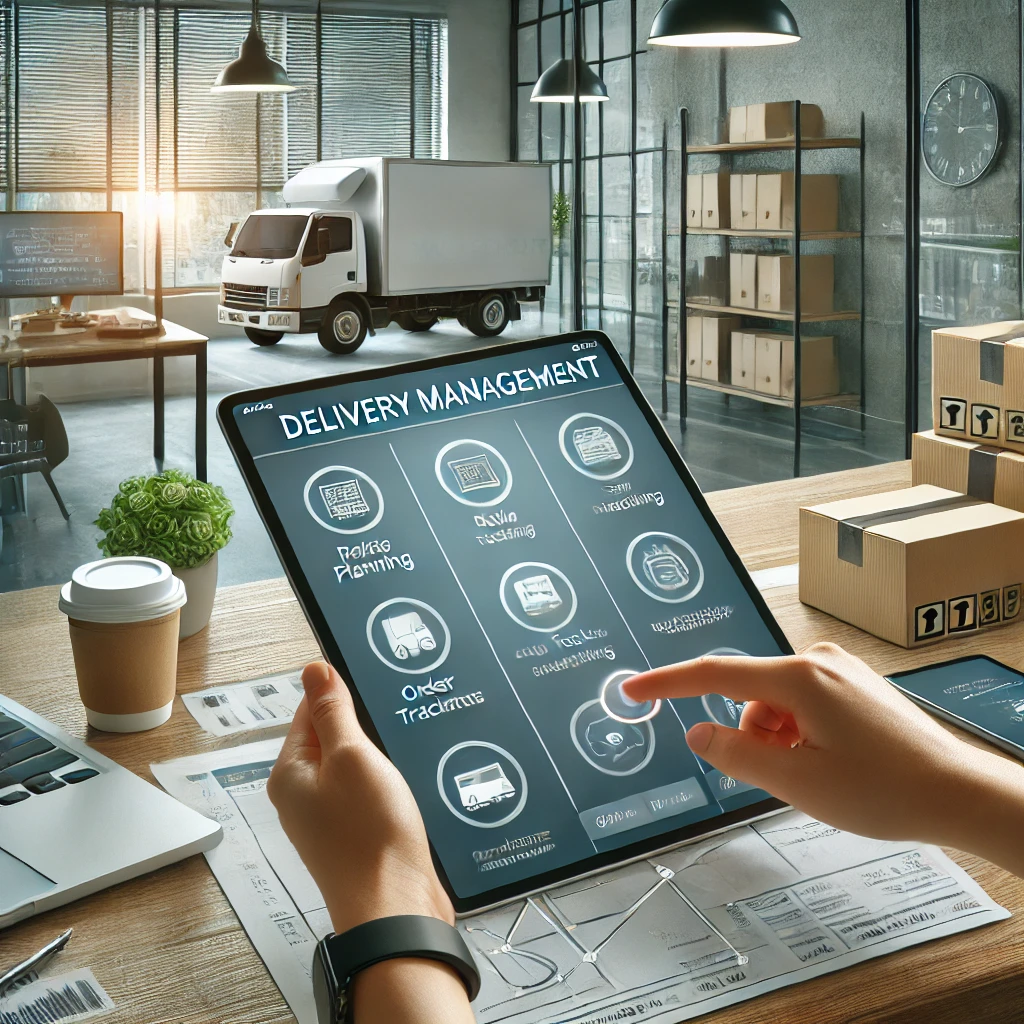A Comprehensive Guide to Delivery Software for Small Businesses

Understanding Delivery Software
Delivery software is a digital tool designed to help businesses manage and optimize their delivery processes. For small businesses, it can be a game-changer in improving efficiency, reducing costs, and enhancing customer satisfaction.
Key Features of Delivery Software
- Order Management: Track orders from receipt to delivery.
- Route Planning: Plan efficient delivery routes to save time and fuel.
- Delivery Scheduling: Organize deliveries by time and location.
- Real-time Tracking: Monitor delivery progress in real-time.
- Customer Notifications: Automatically update customers about their delivery status.
- Proof of Delivery: Capture signatures or photos as proof of delivery.
- Analytics: Generate reports to analyze delivery performance.
Why Small Businesses Need Delivery Software
- Improved Efficiency: Automate manual processes and reduce human error.
- Cost Reduction: Optimize routes to save on fuel and labor costs.
- Enhanced Customer Experience: Provide accurate delivery times and real-time updates.
- Better Resource Management: Allocate drivers and vehicles more effectively.
- Data-Driven Decisions: Use delivery data to make informed business decisions.
Choosing the Right Delivery Software for Your Small Business
When selecting delivery software, consider the following factors:
- Business Size and Type: Ensure the software is suitable for your business scale and industry.
- Budget: Consider both upfront costs and long-term value.
- Ease of Use: Look for intuitive interfaces that your team can quickly learn.
- Mobile Compatibility: Ensure the software works well on mobile devices for drivers.
- Integration Capabilities: Check if it can integrate with your existing systems (e.g., e-commerce platform, POS system).
- Scalability: Choose software that can grow with your business.
Free Delivery Scheduling Software Options
For small businesses on a tight budget, there are free delivery scheduling software options available. While they may have limitations compared to paid versions, they can be a good starting point:
- Routific: Offers a free plan for up to 3 drivers and 20 deliveries per day.
- Onfleet: Provides a 14-day free trial with full features.
- Google Maps: While not a dedicated delivery software, it can be used for basic route planning.
- Delivery Biz Pro: Offers a free trial period.
- Tookan: Provides a free plan for up to 5 tasks per day.
When using free delivery scheduling software, keep in mind:
- Feature limitations may require manual work for some tasks.
- You might need to combine multiple free tools to cover all your needs.
- As your business grows, you may need to transition to a paid solution for more advanced features.
Implementing Delivery Software in Your Small Business
Follow these steps to effectively implement delivery software:
- Assess Your Needs: Identify your specific delivery challenges and goals.
- Choose the Right Software: Based on your assessment, select software that best fits your needs and budget.
- Set Up and Customize: Configure the software to align with your business processes. This may include:
- Inputting your delivery zones
- Setting up delivery time slots
- Customizing order statuses
- Import Data: Transfer your existing customer and order data into the new system.
- Train Your Team: Provide thorough training to all staff who will use the software, including:
- Order processing team
- Dispatchers
- Delivery drivers
- Start with a Pilot: Begin with a small-scale implementation to identify and resolve any issues.
- Gather Feedback: Collect input from both your team and customers to refine your processes.
- Fully Deploy: Once you’re confident in the system, roll it out across your entire operation.
- Monitor and Optimize: Regularly review performance metrics and make adjustments as needed.
Best Practices for Using Delivery Software
- Keep Data Updated: Regularly update customer information, delivery zones, and pricing.
- Use Real-Time Tracking: Encourage drivers to use real-time tracking features for accurate ETAs.
- Leverage Customer Communications: Use automated notifications to keep customers informed about their deliveries.
- Analyze Performance: Regularly review delivery analytics to identify areas for improvement.
- Maintain Flexibility: Be prepared to make manual adjustments when necessary (e.g., for special requests or unforeseen circumstances).
- Encourage Customer Feedback: Use post-delivery surveys to gather customer insights and improve your service.
- Stay Compliant: Ensure your delivery processes comply with local regulations and food safety standards (if applicable).
Overcoming Common Challenges
- Resistance to Change: Gradually introduce the software and highlight its benefits to encourage adoption.
- Technical Issues: Have a dedicated point of contact with your software provider for quick problem-solving.
- Balancing Automation and Personal Touch: Use software to enhance, not replace, personal customer service.
- Handling Peak Periods: Plan for busy times by setting realistic delivery promises and potentially hiring temporary staff.
Measuring Success with Delivery Software
Track these key performance indicators (KPIs) to gauge the effectiveness of your delivery software:
- On-time delivery rate
- Average delivery time
- Customer satisfaction scores
- Number of deliveries per driver per day
- Fuel costs
- Customer retention rate
Case Study: Local Pizzeria Transforms Deliveries
“Paolo’s Pizzeria” implemented a free delivery scheduling software and saw significant improvements:
- Reduced delivery times by 20% through optimized routes
- Increased daily deliveries per driver from 15 to 20
- Improved customer satisfaction scores by 30% due to accurate ETAs and notifications
- Reduced fuel costs by 15% through more efficient routing

Linbis: A Comprehensive Solution for Small Business Deliveries
While we’ve discussed free options, it’s worth considering more comprehensive solutions like Linbis as your business grows. Linbis offers:
- Integrated Order Management: Seamlessly manage orders from multiple channels.
- Advanced Route Optimization: Go beyond basic scheduling to truly optimize your delivery routes.
- Real-Time Tracking: Provide customers and your team with accurate, real-time delivery information.
- Customizable Notifications: Keep customers informed with branded, automated updates.
- Mobile App for Drivers: Equip your drivers with an easy-to-use mobile application for efficient deliveries.
- Analytics and Reporting: Gain deeper insights into your delivery operations to make data-driven decisions.
- Integration Capabilities: Connect with your existing systems for a seamless workflow.
While Linbis is a paid solution, its comprehensive features can provide significant value as your delivery operations become more complex.
Conclusion
Implementing delivery software, whether a free scheduling tool or a more comprehensive solution like Linbis, can significantly improve your small business’s delivery operations. By automating processes, optimizing routes, and enhancing customer communication, you can provide a superior delivery experience while reducing costs.
Remember, the key to success is choosing the right tool for your business size and needs, properly implementing it, and continuously optimizing your processes based on the data and insights the software provides.
As your business grows, be prepared to reassess your delivery software needs. What starts as a free scheduling tool might evolve into a need for a more robust, integrated solution like Linbis. The goal is to have a delivery management system that not only meets your current needs but can also scale with your business, ensuring you’re always providing the best possible service to your customers.
